Revolution of 11 September 1852
The Revolution of 11 September 1852 was a conflict between the Province of Buenos Aires and the government of Justo José de Urquiza, after the latter triumphed over Juan Manuel de Rosas at the Battle of Caseros.
| Revolution of 11 September 1852 | |||||||
|---|---|---|---|---|---|---|---|
| Part of Argentine Civil Wars | |||||||
| |||||||
| Belligerents | |||||||
| military forces of Buenos Aires | Confederation forces | ||||||
| Commanders and leaders | |||||||
|
Justo José de Urquiza José Miguel Galán |
Benjamín Virasoro Manuel Urdinarrain | ||||||
| bloodless coup d'etat | |||||||
 Location within Argentina | |||||||
A period known as "National Organization" was initiated after the Battle of Caseros. Every political faction agreed on authorizing a national Constitution. However, in opposition to the rest of the country, the ruling upper class in Buenos Aires aspired to impose political requirements on the Argentine provinces, so as to maintain the traditional political and economic preeminence of the capital city.
The result was a ten-year separation between the Argentine Confederation and the State of Buenos Aires. Both states claimed to be part of a single nation, but in reality they behaved like separate states.
Background

After the 1819 and 1826 constitutions failed, rejected by the interior provinces due to their Unitarian Party tendencies, the Federal Party (federales) rose to power in every provincial government. Such a victory came at the cost of three decades of civil war in Argentina. Despite the absolute defeat of Unitarian factions and the death or exile of their main figures, the provinces were not able to impose a constitutional organization in a federal fashion. Their chief obstacle was the province of Buenos Aires, despite the fact that all of its administrations had been federales since 1827.
During Juan Manuel de Rosas' long dictatorship, as of 1835 he delayed authorization of a National Constitution until the interior provinces were at peace and well organized. Moreover, this facilitated the imposition of numerous privileges on the interior provinces, to the benefit of Buenos Aires province; in particular economic dominance through monopoly of customs, and acting as the sole representative for all in foreign relations.
An alliance, formed by the two traditional parties, the Unitarians and some Federales from the interior, in addition to the Empire of Brazil, launched an attack on Rosas. They built the Ejército Grande (Grand Army), commanded by the Governor of the Province of Entre Ríos, Justo José de Urquiza. They defeated Rosas in the Battle of Caseros. All the victorious factions agreed that the next step was to establish national institutions through a Constitution. However, shortly thereafter it became evident that the Unitarians (many of whose leaders had spent years in exile and had returned in the months following the battle) aspired to maintain the hegemony of the city of Buenos Aires.
During the first days after the Battle of Caseros, Urquiza's preeminence was accepted by everyone. He named Vicente López y Planes as deputy Governor on the 4 February. For a few weeks, an alliance of Unitarians and Federales was in charge of provincial government, symbolized by the participation in office of Unitarian leader Valentín Alsina.
On the 11th of April, Urquiza called for elections for the State of Buenos Aires House of Representatives, from which the Unitarian parties emerged victorious. Nonetheless, they voted López y Planes as Governor on 1 May. This election caused the resignation of Alsina and Manuel Escalada, Minister of War.
San Nicolás Agreement
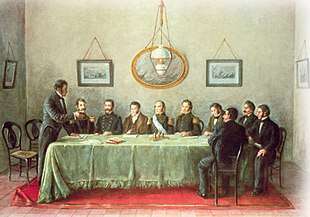
An agreement known as the Palermo Protocol, signed 6 April (in Rosa's house) by the governors of the four coastal states, endowed Urquiza with full powers nationally, and over foreign relations. It also called for an extraordinary meeting of all provincial governors in San Nicolás de los Arroyos. Some days later, a meeting of Urquiza's followers discussed a draft agreement to be presented before the governors by Juan Pujol. In the House of Representatives, Liberals tried to discuss certain conditions to be imposed on the meeting. Ignoring that, governor López set out for San Nicolás without obtaining the authorization of the House.
Nearly all provincial governors attended the meeting in San Nicolás. On the 31 May, they signed the San Nicolás Agreement, which called for a Constituent Congress to be formed made up of two delegates from each province, with the goal of authorizing a Constitution. Among other arrangements, it was established that Representatives would attend with full power to vote their conscience, without restraint on their liberty of action, although the provinces would be able to withdraw the delegates and replace them, if necessary. The provisions for "full powers" had been used many times before by Porteño governments to pressure provincial delegates into accepting measures in opposition to the instructions given them by the provinces. The essential difference was that this time, the Congressional meeting would not take place in Buenos Aires, but in Santa Fe. This way, pressure wouldn't be applied by the Porteño government, but by the Provisional Director of the Argentine Confederation: general Urquiza himself, who paid the wages of the delegates and had put the Governor of Santa Fe in office.
Moreover, Urquiza was bestowed with the title of Provisional Director of the Argentine Confederation, so that he could establish a national government with full executive and legislative powers.
The events of June
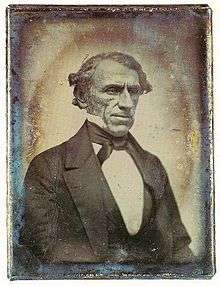
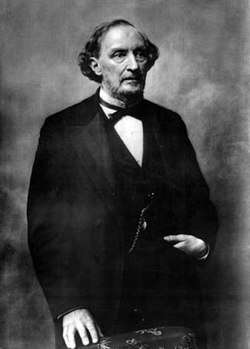
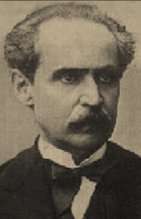
In Buenos Aires, news about the signing of the San Nicolás Agreement provoked a reaction among the most zealous Unitarian factions. By the time governor López y Planes arrived in Buenos Aires on the 12 July accompanied by General Urquiza, the press had already shaped public opinion against the agreement. Foreshadowing what would eventually occur, an article in El Nacional ended with a striking claim from a discourse by Dalmacio Vélez Sarsfield:
It's impossible to govern a people whose rights are violated. One day, they will free themselves. Day and night, it will be an immense power, threatening the existing power, and it will end up defeating that power, because the people are always victorious in the end.[1][2]
In the House of Representatives, Colonel Bartolomé Mitre gave a series of speeches rejecting the agreement, with the argument that the Governor had not been authorized by the House to sign an agreement, and that powers bestowed to the Provisional Director were dictatorial.[lower-alpha 1]
The agreement had no defenders in the House, except for Representative Francisco Pico and ministers Juan María Gutiérrez and Vicente Fidel López—son of the Governor. He rejected the alleged right of porteños[lower-alpha 2] to impose their requirements to the rest of the country, with a famous phrase:
I love the people of Buenos Aires, where I was born, as much as or more than anybody else does. But I raise my voice to say, my country is the Republic of Argentina, and not Buenos Aires!
The public, incensed against the government, hampered López from continuing his speech. The next day, assured that the agreement would be rejected, every minister resigned. A few hours later, the governor handed in his resignation as well, which was accepted immediately. The president of the legislature, the aging General Manuel Pinto, was appointed provisional Governor.
Urquiza, who was in the outskirts of Buenos Aires, reacted immediately and with energy: on the 24th of June, Pinto received a note, which read:
I consider things to be in a complete state of anarchy, and in this conviction I find myself completely authorized to fulfill my primary duty, which is to save the homeland from demagogy, after having saved it from tyranny.[4]
Urquiza also announced that the House was officially dissolved, and that he was personally assuming executive powers. He also shut down various opposition periodicals, and expelled some of the top leaders from the territory, including Alsina, Mitre and Domingo Faustino Sarmiento. While he officially reinstated López in the government, López did not fully assume his powers.
Runup to revolution
.jpg)
López approved the agreement on behalf of the province, and called for elections, in which two delegates, Salvador María del Carril and Eduardo Lahitte, were elected to the Congress in Santa Fe in a low-turnout election.
On 26 July Vicente López—in disagreement with Urquiza's order to return seized property to Rosas—abandoned governance for good.[lower-alpha 3] Urquiza appointed himself Governor, foreshadowing what the Constitution would later name "federal intervention".
During his term as governor of Entre Rios Province, Urquiza sent doctor Santiago Derqui to Paraguay, to sign treaties of open navigation and to acknowledge the sovereignty of the country, which had been rejected previously by Rosas in 1843.[5] Simultaneously, he announced the open navigation of interior rivers, an old grievance of the coastal provinces, which the liberal Porteños[lower-alpha 2] had signed on to in opposition to Rosas, for ideological reasons. But this measure brought him the hatred of old Rosas supporters, because they viewed it as the province losing its old privileges, and drew them closer to the positions of the liberals.
A tense calm held during the two months following Urquiza's coup: some of those who were exiled returned, while the city grudgingly accepted the intervention and military occupation. In public, there were no aggressive moves towards the general, and his birthday was even celebrated in Club del Progreso,[6] but opposing parties went forward with revolutionary plans, which Urquiza confidently disregarded.
At the beginning of September, Urquiza, in a gesture of preference for his own province, handed over political power to José Miguel Galán, leader of the forces of Entre Ríos and Corrientes provinces in the city. This displeased generals Juan Madariaga and José María Pirán, leaders of the Corrientes troops. On 8 September, Urquiza went to Santa Fe, to open the Constituent Congress sessions.
Revolution
In the early morning of the 11th of September, Galan's Correntinas troops and most of the military forces of the city grouped in Plaza de Mayo, conducted by general José María Pirán, while lawyer Miguel Esteves Saguí alerted the populace by sounding the bell in the Cabildo. Various militia formations went through the city, and generals Benjamín Virasoro and Manuel Urdinarrain were arrested in their homes. There weren't major acts of violence, and the coup developed tensely, but peacefully.[7][8]
Near noon, while the troops were paid wages many months in advance, in addition to an extra sum, the House of Representatives (which had been dismissed by Urquiza) gathered once more, and elected General Pinto as temporary Governor. He named Alsina as Minister of Government and General Pirán as Minister of War.
General Galán, conducting only a few military forces in Entre Ríos, withdrew first to Santos Lugares, and then to the north of the province, from where he called Urquiza, who was getting ready to preside the beginning of the Constituent Congress sessions. A few days later, a provincial law agreed on financial rewards and rank promotion to the military involved in the revolution.
September to December


Aware of the situation in Buenos Aires, but assuming Galán was in Santos Lugares, Urquiza counter-marched up to San Nicolás, at the front of a small army from the province of Santa Fe. But on arriving to that city, he learned about Galán's retreat and the campaign chiefs' support of the revolution; they were Colonels Hilario Lagos and Jerónimo Costa, who had been in the Capital, as had the commanders of the north campaign, José María Flores; the centre, Ramón Bustos; and the south, Juan Francisco Olmos, who had spoken in favor of the new governor. Notified of this, Urquiza stopped his march, announcing he regretted the events, but, since the people agreed with the coup, he didn't mean to impose his will over the will of the people of Buenos Aires. Years later, in a letter, he would explain he had judged
"that revolution the movement of a circle, of a faction. When, in coming closer, I noticed that the people of Buenos Ayres accepted the movement and appropriated it, I suspended the march and declared that I was allowing the people of Buenos Ayres the free exercise of their rights and of searching the methods of adhering to the nationality in a way that its legitimate representatives would find convenient"
Meanwhile, in Buenos Aires, during a meeting in the Teatro Coliseo, Alsina embraced publicly with the chief of Porteños Federals, Lorenzo Torres, who had been an ardent Rosas follower. It was the beginning of the reorganization of political parties, which allowed to reinstate politicians with a Rosist past to the political scene. Also, many military chiefs were reinstated to the Porteño army, in a process that had begun many months before.
That same day, Governor Pinto officially separated Buenos Aires province (which from then on would be known as State of Buenos Aires) from the Argentine Confederation. The House of Representatives demanded their Representatives on the Congress the return to Buenos Aires.
On the 24th of September, knowing that Urquiza had left for Entre Ríos, the government demanded the immediate exit of several people from the province, among them, colonels Bustos y Lagos.
A few days after the revolution, an official communication to the rest of the provinces, announced the intentions of expanding the movement to the rest of the country. Although it didn't claim that they would do it in a military way, it did say that they would be willing to defend it "with a sword on the hand"
In the beginning of October, General José María Paz, leading figure of the Unitarian party, was sent in a peaceful mission to the inner provinces, starting with Cordoba, to explain their position to local governments. But the Governor of Santa Fe didn't allow him to go through his province, which frustrated the attempt. He remained as Commander of the north of Buenos Aires province, with headquarters in San Nicolás.
In the end of that same month, the House of Representatives elected Valentín Alsina as Governor.
In mid-November, with the excuse of carrying Correntinos soldiers back to their provinces, a double expedition under the charge of Generals Manuel Hornos and Juan Madariaga invaded the province of Entre Ríos. Simultaneously, Alsina ordered general Paz to prepare to invade Santa Fe; but the old General refused to move. Lacking external support, the invasion to Entre Ríos failed completely, attacked by the troops that Urquiza could mobilize effortlessly, since the predicted advances on Santa Fe had never taken place. The remains of the invading army fled in disorder to Corrientes. Governor Pujol, of that province, on whose support the Portños counted, received their troops, but disarmed its chiefs and expelled them form Argentine territory. From then on, Pujol would be a loyal ally of Urquiza. Porteños would count on the interior of the country for nothing more that a few governments that wouldn't be in position to lend any support. The Confederation inner stability was safe, but Buenos Aires still remained to be reincorporated.
On 20 November, after the lecture of an Urquiza's speech, while he was absent, the Constituent Congress started its sessions, without the attendance of Porteños Representatives.
Counterrevolution and siege of Buenos Aires
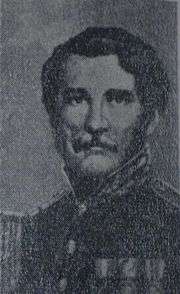
On December 1st, standing in front of the campaign troops, Colonel Hilario Lagos spoke against Alsina's government in Guardia de Luján, today Mercedes. The major part of the rest of the campaign commanders, like Costa, Bustos or Flores, spoke in favor of Lagos. Basically, they demanded the reincorporation of the province to the Confederation, and Alsina's resignation and replacement by General Flores.
On December 6, Alsina presented his resignation and was replaced by general Pinto. The same day, Lagos' troops attacked the city, but the quick reaction of many determined leaders, specially Mitre, stopped them from seizing the Capital. Two days later, Lagos laid officially the siege to Buenos Aires city.
Many leaders who had collaborated with Alsina's downfall, like Lorenzo Torres, refused to accept Flores' or Lagos' authority, and least of all and agreement with Urquiza. In such way that, leaving behind their internal conflicts, they collaborated on defending the city. Torres himself took over the Government Ministry at the end of December.
Three weeks later, Urquiza sent support troops to Lagos, so he reinforced the siege but couldn't breach the resistance of the Porteña infantry with his almost exclusively cavalry troops. Moreover, the Government of the city sent a prestigious campaign chief, Pedro Rosas y Belgrano, to gather the troops that remained loyal in the interior of the province. These were totally defeated in the Battle of San Gregorio, on January 22, in part because Urquiza's squad had also blocked Buenos Aires city by the side of the River Plate, a few days before the battle.
During some months, the city of Buenos Aires remained besieged and isolated, but its financial superiority kept if safe from the sieger's attacks. A treaty signed on March 9th between Buenos Aires government and the Constituent Congress set the peace conditions between the State of Buenos Aires and the Confederation, but did so in conditions that both Urquiza and Lagos considered negative for the Confederation: it left the income from customs in the hands of Buenos Aires and allowed this province to elect up to 10 Representatives. Which is to say, it favored Buenos Aires precisely in the two matters that were more disputed between this and the rest of the provinces. The treaty was ultimately rejected, and Urquiza reinforced his military support to the siege, incorporating himself into it.

On May 1st, the Congress sanctioned at last, the National Constitution. In the following months it would be sworn on by every Argentine province, Buenos Aires included: the official news was never sent to the city of Buenos Aires, but to the military and political commander of the interior, General Lagos. He hastily assembled a legislature, which officially sanctioned the National Constitution. The government of the city completely rejected the Constitution.
In the end of April, General Urquiza had taken advantage of the venality of Porteños naval commanders to buy their defection to the Buenos Aires cause, and completely block the port of Buenos Aires. But Urquiza's strategy backfired on June 20th: the commander of the fleet John Halstead Coe, sold himself for a huge amount of money to the porteños, and handed them almost all the fleet.
The failure of the blockage had an enormous demoralizing effect on sieging troops. A few days later, general Flores, who had abandoned the siege, returned to the north of the province with a huge sum of money, with which he bought a large part of Lagos' troops. On July 12th, Urquiza abandoned the siege of Buenos Aires, followed by General Lagos himself and part of his troops.
The siege had failed.
Consequences
From the on, the State of Buenos Aires (which would sanction a Constitution in 1854) kept separate from the rest of the country. Its leaders vacillated between making official the national independence of the State and the presumption that they represented the whole Nation.
The Argentine Confederation elected Urquiza as their first president, and he governed until 1860 with a certain political stability, but facing serious economic problems, and handing over many governmental functions to provincial governments.
The exiled leaders tried repeatedly to invade Buenos Aires, but failed every time; until General Jerónimo Costa was defeated and executed without trial, together with his officers, at the beginning of 1856.
From then on, a relative peace reigned between Buenos Aires and the Confederation. The porteños took advantage of this peaceful state to increase their influence on the inner provinces, bolstered by their undeniable commercial and financial superiority.
The Battle of Cepeda, in 1859, forced Buenos Aires to accept the National Constitution, but this wasn't a definite solution, because instability in the government of Urquiza's successor, Santiago Derqui, and the advances of Buenos Aires advocates in several inner provinces provoked a new confrontation, in the Battle of Pavón. The victory of the porteños in this battle caused the dissolution of the Confederation government, and the temporary rise to national power of the Buenos Aires Governor Bartolomé Mitre. During this provisional government, Mitre's forces invaded more than half of the inner provinces, and replaced their federal governments by unitarian ones.
When Mitre took over Presidency of the whole country, in October 1862, he finally achieved the goals that he and the rest of the leaders of the Revolution of September 11th had set: constitutional organization of the country under the preeminence of the rulers, the political and economical ideas, and the interests of the province of Buenos Aires.
See also
- Argentine Civil War
- Buenos Aires Cabildo
- José María Flores
- Juan María Gutiérrez
- Platine War
- Santa Fe Province
Works cited
- Adelman, Jeremy (2 July 2002). Republic of Capital: Buenos Aires and the Legal Transformation of the Atlantic World. Redwood City, Calif.: Stanford University Press. ISBN 978-0-8047-6414-8. OCLC 1041053757.CS1 maint: ref=harv (link)
- Beruti, Juan Manuel (2001). Memorias curiosas [Curious Memories] (in Spanish). Buenos Aires: Emecé.CS1 maint: ref=harv (link)
- Bosch, Beatriz (1984). Urquiza y su tiempo [Urquiza and His Times] (in Spanish). Buenos Aires: Centro Editor de América Latina.CS1 maint: ref=harv (link)
- Carranza, Neptalí (1905). Oratoria Argentina. Recopilación cronológica de las proclamas ... y documentos importantes que llegaron á la historia de su patria, Argentinos célebres, desde el año 1810 hasta 1904 (in Spanish). II. La Plata, Buenos Aires: Sesé y Larrañaga. p. 53. OCLC 559267076. Retrieved 9 June 2018.CS1 maint: ref=harv (link)
- Busaniche, José Luis (2005). Historia argentina [Argentine History] (in Spanish). Buenos Aires: Taurus. ISBN 987-04-0078-7.CS1 maint: ref=harv (link)
- Buenos Aires (Argentina : Province). Legislatura (1883). "Sesio'n del 22 de junio de 1852". Diario de sesiones de la Sala de Representantes de la Provincia de Buenos Aires, 1852 (in Spanish). Buenos Aires: Imprenta Especial de Obras de "La Republica". OCLC 192094539. Retrieved 9 June 2018.
- Labougle, Juan Eugenio (1856). Ensayo sobre la literatura de los principales pueblos y especialmente del Rio de la Plata. Buenos Ayres: J.A. Bernheim. p. 122. OCLC 561264588. Retrieved 8 June 2018.
Un pueblo violentado no es posible gobernarlo: mañana se emancipará. Será, a toda hora, un poder inmenso que esté amenazando el poder existente. Lo vencerá al fin, porque los pueblos siempre vencen.
CS1 maint: ref=harv (link) - Lahourcade, Alicia. "San Gregorio, una batalla olvidada" [San Gregorio, A Forgotten Battle]. Revista Todo es Historia (in Spanish) (126).CS1 maint: ref=harv (link)
- Paz, Gustavo L. (2007). Las guerras civiles (1820-1870) [The Civil Wars (1820–1870)] (in Spanish). Buenos Aires: EUDEBA. ISBN 978-950-23-1596-6.CS1 maint: ref=harv (link)
- Ruiz Moreno, Isidoro J. (2006). Campañas militares argentinas [Argentine Military Campaigns volume II] (in Spanish). Buenos Aires: Emecé. ISBN 950-04-2794-X.CS1 maint: ref=harv (link)
- Sáenz Quesada, María (1984). La República dividida [Divided Republic]. Memorial de la Patria (in Spanish). X. Buenos Aires: La Bastilla.CS1 maint: ref=harv (link)
- Scobie, James (1965). La lucha por la Consolidación de la Nacionalidad Argentina [The Struggle for the Consolidation of Argentine Nationality] (in Spanish). Buenos Aires: Hachette.CS1 maint: ref=harv (link)
- Shumway, Nicolas (18 March 1993). The Invention of Argentina. History. Latin American Studies. Berkeley, California: University of California Press. p. 173. ISBN 978-0-520-08284-7. OCLC 875478257.CS1 maint: ref=harv (link)
- Zinny, Antonio (1987). Historia de los gobernadores de las Provincias Argentinas [History of Provincial Governors of Argentina] (in Spanish). Hyspamérica. ISBN 950-614-685-3.CS1 maint: ref=harv (link)
References
- Notes
- Years later, Mitre was rightly accused of assuming even wider powers in the period following the dissolution of the Confederation following the 1861 Battle of Pavón and his assumption of the Presidency several months later. See Ruiz Moreno, Isidoro J. (2005). El misterio de Pavón [The Mystery of Pavón] (in Spanish). Buenos Aires: Claridad. ISBN 950-620-172-2. OCLC 948386138..
- Porteños: Here, people from Buenos Aires.
- This was the end of López's political career, and he never exercised any political or judicial role again.
- Footnotes
- Scobie 1965, p. 44.
- Labougle 1856, p. 122.
- Diario de sesiones 1852, p. 102.
- Carranza 1905, p. 53.
- Cisneros, Andrés; Escudé, Carlos; et al. (1998). "27". Historia general de las relaciones exteriores de la República Argentina. Desde los orígenes hasta el reconocimiento de la independencia formal [General History of Foreign Relations of the Republic of Argentina. From its Origins until Recognition of Formal Independence]. Coleccion Estudios Internacionales (in Spanish). 5. Buenos Aires: Nuevohacer / Grupo Editor Latinoamericano. p. 171. ISBN 978-9506-94545-9. OCLC 318220711.
- Bosch Vinelli, Julia Beatriz (1972). Urquiza y su tiempo [Urquiza and His Times]. Biblioteca de America: temas (Rev. ed.). Buenos Aires: Eudeba. OCLC 221297115.
- Adelman 2002, p. 257.
- Shumway 1993, p. 173.
Further reading
- Szabla, Christopher (2011-09-12). "Buenos Aires' September 11 Street". Maisonneuve. Retrieved 2018-06-02.CS1 maint: ref=harv (link)
- Hole, Myra Cadwalader (1947). Bartolomé Mitre: A Poet in Action. Hispanic Institute in the United States. p. 36. OCLC 3364542.
External links
- Portal of the history of Argentina (in Spanish)
- Portal of the Ministry of Foreign Relations of the Argentine Nation (in Spanish)